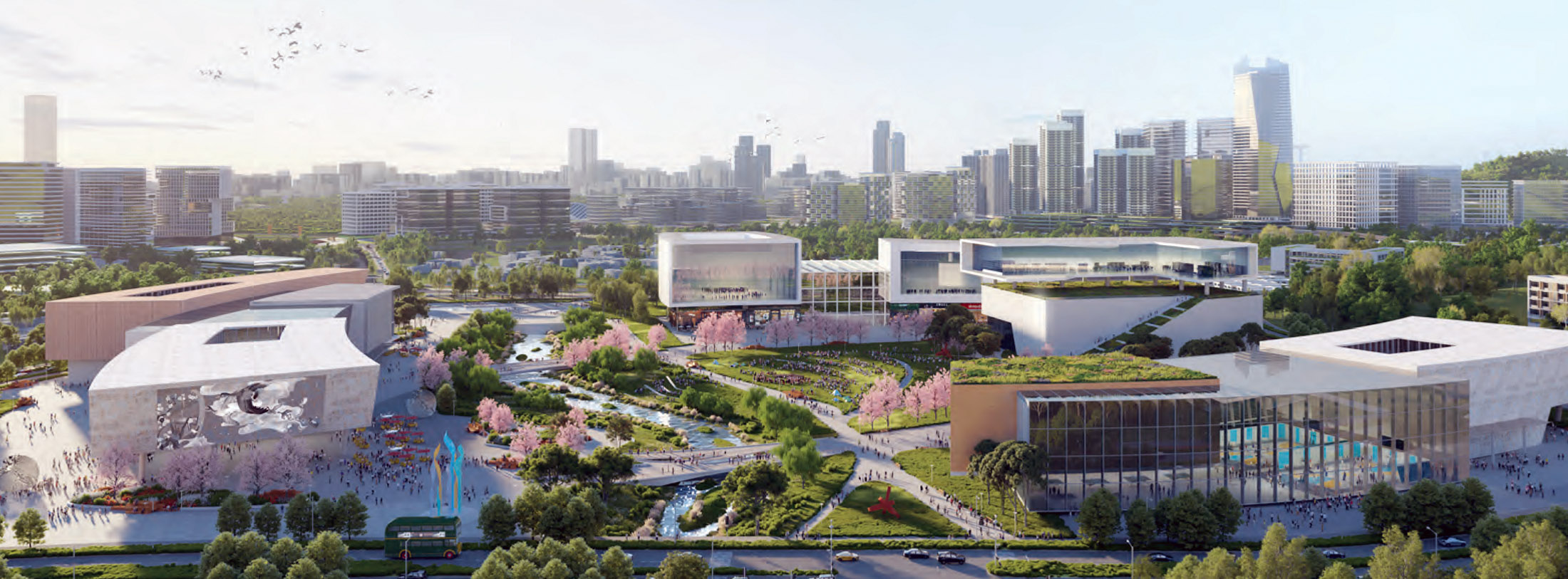Pioneering digital integration, Hong Kong bridges innovation and security for future growth in the Greater Bay Area. Jessica Chen reports.

Hong Kong resident Chow Pun could not hide his elation when Agricultural Bank of China — one of the nation’s “Big Four” lenders — gave the nod to his application for a loan through a cross-boundary data verification system between the Hong Kong Special Administrative Region and Shenzhen.
Chow, who’s pursuing his entrepreneurial dreams in Shenzhen’s Qianhai Cooperation Zone, was among the first Hong Kong residents to recently benefit from seamless financial services between the SAR and the Chinese mainland, enabled by a blockchain-based data transaction channel linking the innovation parks on each side of the Shenzhen river that forms a boundary between the two jurisdictions. His story signifies a significant digital integration between the SAR’s Northern Metropolis and the rest of the Guangdong-Hong Kong-Macao Greater Bay Area.
READ MORE: Chan: HK’s Northern Metropolis poised for innovative growth
In the penultimate Policy Address of his current term, Chief Executive John Lee Ka-chiu praised the mega Northern Metropolis, which sits on the mainland’s doorstep, for its “innovative” and decisive measures to fast-track what is seen as Hong Kong’s future growth engine. Among an array of transformative plans and steps to be taken, dedicated legislation created to facilitate the Northern Metropolis development has drawn much public attention.
Legislative push
Government sources revealed that such dedicated legislation is designed to enable the government to supervise and facilitate the cross-boundary flow of data and capital.
Another insider told China Daily that an unrestricted flow of data will only be allowed within innovation parks in the Northern Metropolis area, with mechanisms in place to prevent leakage of sensitive information.
In the coming years, the SAR government plans to expand the flow of cross-boundary data, particularly research information, from the mainland to the Hong Kong-Shenzhen Innovation and Technology Park in the Lok Ma Chau Loop, for use by enterprises and organizations within the park.
Hong Kong is creating a management system to ensure safe and convenient transfer of information, encourage data market openness, and pool mainland and overseas data, positioning the city as an international data hub.
The Shenzhen Data Exchange Centre began operations in the Hetao Cooperation Zone in 2022. As of February, the center’s data transactions reached a trade volume of 13.4 billion yuan ($1.88 billion), taking a major step forward in propelling Hong Kong to be a global data hub.
Hong Kong’s Secretary for Innovation, Technology and Industry Sun Dong says the SAR aspires to be a world data hub although the city is still three years behind the vision of its sister city, Shenzhen.
The Legislative Council Secretariat’s Policy Pulse said in its May 2025 issue the legislature had responded to the SAR government’s efforts to optimize cross-boundary cooperation in the Lok Ma Chau Loop, with a set of “forward-looking new policies and systems in frontier fields” being considered.
“Data security and cybersecurity are integral parts of national security. Therefore, from the Hetao Loop to the Northern Metropolis, I appreciate the steady, incremental progress in experimenting with data flow, among other initiatives, always safeguarding national security as a premise for development,” Lawmaker Chan Yuet-ming told China Daily.
Chan, who is also a nonofficial member of the Advisory Committee on Northern Metropolis, says the SAR government should hasten the mega project. According to Policy Pulse, Hetao is meant to be a“true ‘one-stop’ hub with cross-boundary data sandboxes and pre-agreed intellectual property sharing arrangements, allowing spin-outs to scale seamlessly on either side".
“To speed up development, new laws have to be enacted, and government departments will need to work together to simplify procedures. Such a new approach clearly abandons Hong Kong’s long-cherished hands-off, non-interventionist policy,” says Executive Council Convener and Legislator Regina Ip Lau Suk-yee.
Private sector hurdles
On the other hand, Hong Kong's proactive stance on effectiveness has raised public concerns about the potential risks of the government-led model. Private developers are hesitant about joining the Northern Metropolis, wary of demand and execution risks, according to a co-authored research report on the mega project penned by Chan and two other lawmakers -- Doreen Kong Yuk-foon and Chow Man-kong.
Henderson Land Development, the largest agricultural-land owner in the New Territories, is expected to benefit significantly from the mega project, but its development plans in the area have yet to go beyond merely memoranda of understanding. The reason is obvious — the supply of private homes is saturated. With some 12,000 flats still unsold, the prospect of an extra supply of 16,500 flats in the Northern Metropolis for the initial stage seems more like a liability for private developers than an asset.
ALSO READ: Shenzhen-Hong Kong-Guangzhou cluster set to lead global innovation
The trio legislators have called have called for work on the Northern Metropolis to be stepped up by the government working more closely with the private sector.
Their views were met by skepticism that ready-made infrastructure alone is sufficient to attract competitive and suitable companies to establish themselves in the area.
“At the end of the day, it’s the major players in the parks who can make the project succeed, not the buildings,” says Legislator Michael Tien Puk-sun, whose constituency, New Territories North West, is located in the Northern Metropolis area.
Contact the writer at jessicachen@chinadailyhk.com


